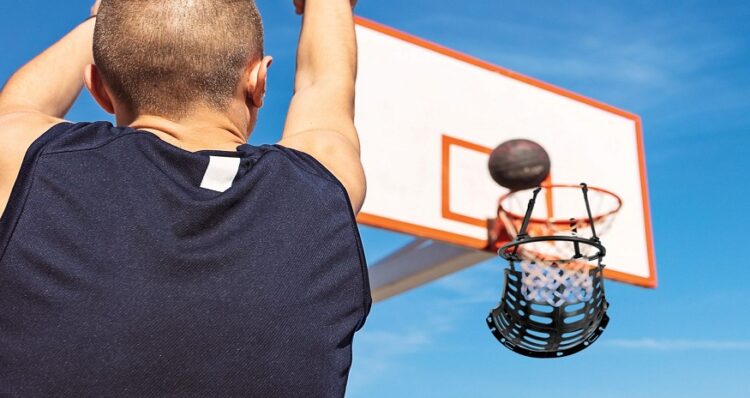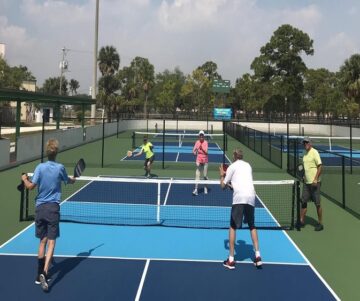
Your Complete Guide to Basketball Rebounder Setup and Care
admin | September 2, 2023 | 0 | Sports
High-quality basketball training requires dedicated practice time with a properly configured rebounder. This versatile piece of equipment is invaluable for honing shooting skills. The basketball rebounder catches shot attempts, returns balls to the shooter, and provides feedback on shooting accuracy.
Players and coaches must thoroughly understand proper rebounder setup, adjustment, maintenance, and troubleshooting to gain full benefit during practice sessions. This guide will walk you through the entire process, from initial unboxing to ongoing care. Follow these tips to optimize your rebounding net basketball experience and take your basketball shooting game to the next level.
Unpacking the Components
When you first receive your new basketball hoop rebounder setup, carefully unpack all parts and take inventory. Getting to know the components upfront will make assembly easier. The major elements include the fully motorized basketball shooter mounted beneath the hoop, two tall silver adjustable support poles, the nylon netting system, and an electronic shot counter with a digital scoreboard.
The basketball shooter fires balls at precise arcs, speeds, and frequencies. The poles provide stability for the entire structure. The net catches balls and returns them to the shooter smoothly. And the shot counter tracks makes and misses to supply feedback on shooting accuracy.
Positioning the Basketball Shooter
Proper placement of the basketball shooter is crucial for precision shooting practice. Position it directly underneath the back of the hoop, avoiding any side-to-side or front-to-back deviation.
Use tape or marks on the floor to maintain consistent positioning if moving the rebounder between practice sessions. The electronic shot counting system should always be centered to ensure your shooting data remains reliable.
Adjusting the Silver Support Poles
The support poles may seem basic, but they provide vital structural integrity. Extend both poles until the locking pins securely snap into the correct holes.
This keeps the entire basketball rebounder unit stable during intense shooting action. Loose poles lead to shakiness and erratic ball returns. So take time to properly extend the poles and confirm the lock pins are fixed.
Caring for the Rebounding Net
An unmanaged basketball rebounding net can quickly become a tangled mess, disrupting your shooting rhythm. After each practice session, devote 5–10 minutes to untangling the chords using the attached hoop.
Consistently straightening the cords prevents problematic knots and jams. It also maintains the ideal net slope for proper ball returns. Developing this diligent net-care routine ensures smooth shooting drills.
Tuning the Net Height
One beauty of basketball rebounders is their adjustable net height range. This allows coaches and players to customize drills to match their skills. For beginning youth players new to shooting, 7.5–8 feet is ideal. Intermediate players should increase to 9–10 feet.
This added height enhances a proper shot arc. For advanced skill development, raise the net to mimic challenging in-game shots under defensive pressure. Just ensure the height isn’t so excessive that it leads to a barrage of airballs.
Powering the Rebounder Properly
Basketball rebounders require significant power to drive the motorized ball launching system. Plug directly into a high-amp circuit, not a typical household extension cord prone to overheating.
Never daisy chain multiple weaker cords to reach a faraway outlet. This can starve the rebounder motor of adequate power, leading to blown fuses or potential equipment damage. Use a single heavy-duty extension cord for peak performance.
Loading Basketballs into the Rebounder
Always use regulation-sized basketballs matching your rebounder’s intended use—men’s or women’s. Start drills with at least four basketballs to establish a steady shooting rhythm. Add more balls to increase the difficulty and physical demands to 10.
Exceeding 10 will likely overfeed the rebounder, decreasing your shooting accuracy. The key is consistently returning to a shot-ready stance.
Daily Checklist for Care and Maintenance
Make quick rebounder inspections part of your regular pre-practice routine. Visually check for loose bolts, frayed cords, or unstable components. Wipe down the poles and inspect the net tension before each use.
Store the rebounder indoors to prevent moisture damage if possible when not in use. Follow these tips to extend the life of your basketball rebounder and maintain safety.
Conclusion:
A properly configured and cared-for basketball rebounder delivers incredible long-term value to players and those coaching basketball shooting. It will remain accurate and consistent during practice sessions by taking time to inspect, adjust, maintain, and troubleshoot the system. Follow this guide to enhance your shooting skills and on-court performance. The basketball rebounder is an investment in better basketball.

